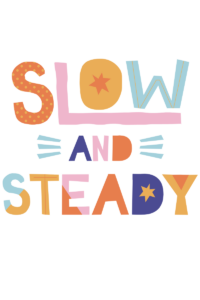What Is A Fraction Talk?
Just like number talks, they allow room for discourse, strategies, and fluency. It also allows teachers to assess how a student is interpreting fractions and if they have a conceptual understanding of them.
Fraction Talks Should Be Added To Your Numeracy Routine Block
(Zhang 2015) States that North America tends to overuse the area model and that this has negative consequences. Students have now been forced to look at fractions in two forms area model and number lines. Don’t get me wrong those models are important; however, are they bringing in a deep number sense of the topic?

Fractions Talks Are Not Taking The Place Of Instruction
Put up a visual. You can find some here (Fraction Talks). Always allow time for students to digest the image. You can then have them start their notice and wonder.

Then ask students to choose a section and decide what fraction it would be labeled as. Just like a Number Talk, students take turns in defending their answer. Like any routine, you can have them turn and talk before sharing. Take a look at the following example you could use.
 As students keep working on these Fraction Talks the visuals can get more difficult as well as the computation behind them.
As students keep working on these Fraction Talks the visuals can get more difficult as well as the computation behind them.
Try incorporating a Fraction Talk as part of your numeracy routine block. The great thing about it is that you could start it at any age and extend them as needed.
Want to check out more?
MEMBERSHIP SITE:
https://zennedmath.com/online-courses/
FACEBOOK GROUP: Zenned Math Teachers
https://www.facebook.com/groups/zennedmathteachers/
YOUTUBE CHANNEL: Zenned Math
https://www.youtube.com/channel/UC5njH_5LoK6G67BvZecGfnw?
WANT ME IN YOUR INBOX? Sign up for my newsletter
https://view.flodesk.com/pages/5efc876dcaabca0028b95eb5
DISCLAIMER: Some links included in this blog might be affiliate links. If you purchase a product or service with the links that I provide, I may receive a small commission. There is no additional charge to you!
Just like Number Talks is not the form in which we give number sense instruction. Fraction talks should not be the form of fraction instruction. The goal of these routines is to build fluency and flexibility around the topic.
Take a look at this previous state test question. This really throws students off. It shouldn’t if they had some familiarity and flexibility with different models.

So How Do We Start Fraction Talks?
Put up a visual. You can find some here (Fraction Talks). Always allow time for students to digest the image. You can then have them start their notice and wonder.

Then ask students to choose a section and decide what fraction it would be labeled as. Just like a Number Talk, students take turns in defending their answer. Like any routine, you can have them turn and talk before sharing. Take a look at the following example you could use.
 As students keep working on these Fraction Talks the visuals can get more difficult as well as the computation behind them.
As students keep working on these Fraction Talks the visuals can get more difficult as well as the computation behind them.
Try incorporating a Fraction Talk as part of your numeracy routine block. The great thing about it is that you could start it at any age and extend them as needed.
[/et_pb_text][/et_pb_column][/et_pb_row]Want to check out more?
MEMBERSHIP SITE:
https://zennedmath.com/online-courses/
FACEBOOK GROUP: Zenned Math Teachers
https://www.facebook.com/groups/zennedmathteachers/
YOUTUBE CHANNEL: Zenned Math
https://www.youtube.com/channel/UC5njH_5LoK6G67BvZecGfnw?
WANT ME IN YOUR INBOX? Sign up for my newsletter
https://view.flodesk.com/pages/5efc876dcaabca0028b95eb5
DISCLAIMER: Some links included in this blog might be affiliate links. If you purchase a product or service with the links that I provide, I may receive a small commission. There is no additional charge to you!

